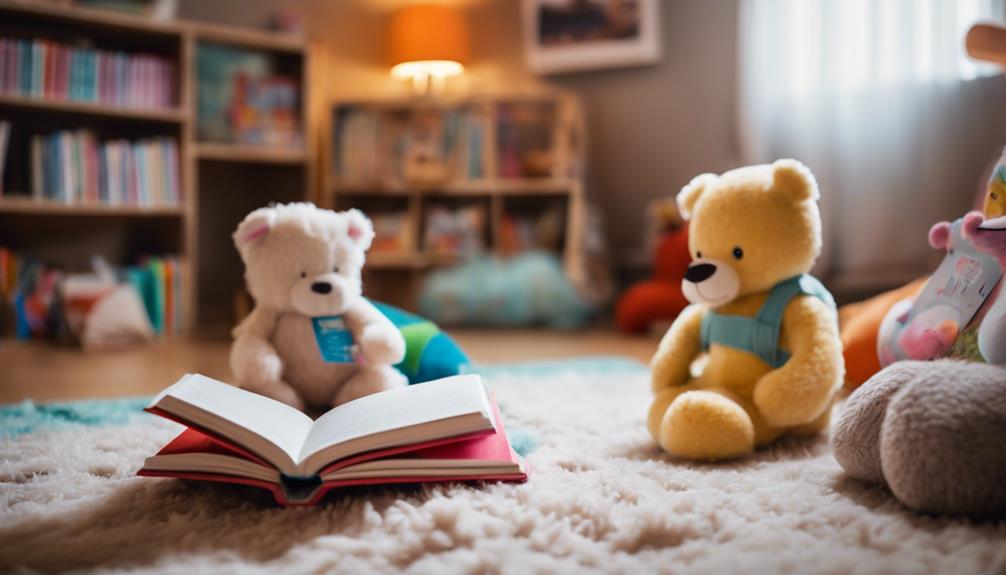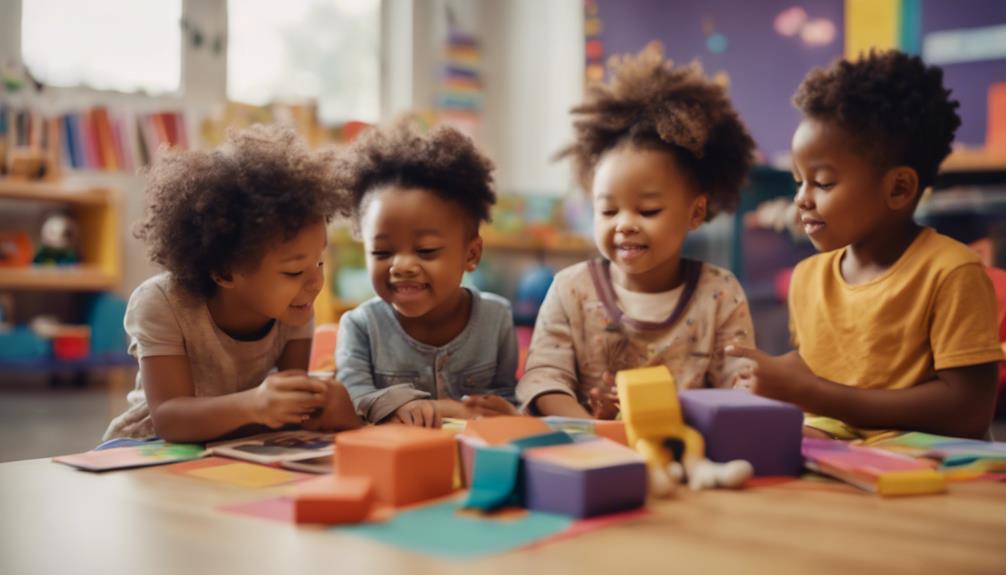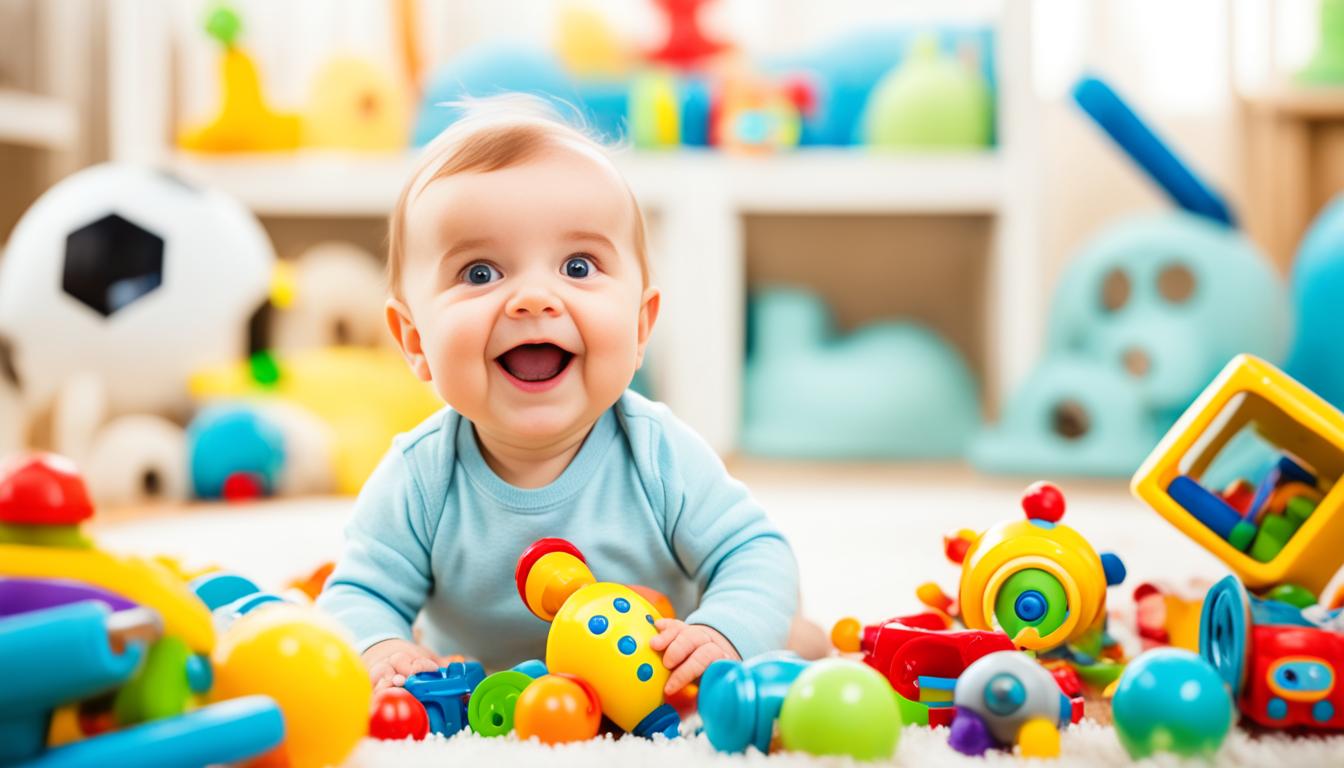Explore leading baby reading programs to establish a strong literacy foundation. Involve your child in interactive exercises and personalized material for rapid learning. Foster a passion for reading with entertaining storybooks and educational workbooks. These programs are crafted to promote early literacy in a fun manner. Witness quick advances in just 30 days with captivating games, books, and interactive features. Learn more about the ways in which these programs can enrich your child’s development.
Key Takeaways
- Programs focus on early literacy foundations and language development for children aged 3-6.
- Engaging learning activities include fun games, storytime adventures, and interactive tools.
- Combined storybooks and workbooks reinforce language concepts and support cognitive development.
- Holistic approach enhances overall learning experience, nurturing curiosity and setting children on a confident reading path.
- Fast results achievable within a month with tailored activities, workbooks, and monthly subscription options available.
Early Literacy Foundations
When introducing your baby to reading programs, focus on building early literacy foundations that will shape their future reading skills.
One popular program that can help with this is the Hooked on Phonics program. This program concentrates on language development, phonemic awareness, and vocabulary building, all essential components of early literacy. By introducing young children to books, stories, and interactive activities, the Hooked on Phonics program aims to promote a love for reading from a young age.
Research indicates that early exposure to programs like Hooked on Phonics can have a positive impact on your child's cognitive development. By creating a nurturing environment that encourages reading, these programs set the stage for a lifetime of literacy enjoyment.
Consider incorporating the Hooked on Phonics program into your baby's routine to kickstart their learning journey and foster a strong foundation for their reading skills.
Engaging Interactive Activities

Baby reading programs offer a variety of engaging interactive activities to keep your little one entertained while promoting essential reading skills. From fun learning games to exciting storytime adventures, these activities are designed to capture your child's interest and make learning enjoyable.
Interactive reading tools provide hands-on experiences tailored to meet the developmental needs of young learners.
Fun Learning Games
Engaging interactive activities in fun learning games provide a dynamic and enjoyable way for children to develop essential reading skills. By incorporating interactive elements into these games, kids not only learn to read but also stay entertained and engaged throughout the process.
The design of these games aims to keep young learners focused and motivated, enhancing their retention and understanding of key concepts. Through hands-on activities, children can actively participate in their learning, making it a more immersive experience.
Fun learning games create a positive environment where education becomes a fun adventure for kids. These games are tailored to suit the interests and learning styles of children, ensuring that they aren't only learning but also having a great time doing so.
Storytime Adventures
Immerse your little one in engaging interactive activities with Storytime Adventures, sparking their love for reading from an early age. This program offers a fun and interactive way for babies to kickstart their reading journey.
Through Storytime Adventures, children can enjoy immersive storytelling experiences that focus on creating a stimulating environment for early literacy development. The interactive activities within the program are designed to captivate young learners and foster a passion for reading.
One standout feature of Storytime Adventures is its integration with the Hooked on Phonics app. This partnership enhances the learning experience by combining interactive storytelling with phonics instruction, making it an effective tool for building foundational reading skills.
Interactive Reading Tools
Explore a variety of interactive reading tools that offer engaging activities to captivate and educate young readers. These interactive reading tools are designed to keep children interested and focused on learning by incorporating fun and enjoyable features. By actively participating in reading activities, young learners can improve their literacy skills while having a great time. The interactivity of these tools not only enhances comprehension but also helps in retaining reading concepts better. Engaging interactive activities cater to different learning styles and preferences of children, making the learning process more personalized and effective.
| Interactive Reading Tools | Features | Benefits |
|---|---|---|
| Interactive eBooks | Sound effects, animations | Enhances engagement and comprehension |
| Reading Apps | Games, quizzes | Makes learning fun and interactive |
| Digital Storytelling Tools | Create own stories | Sparks creativity and imagination |
Tailored for Young Learners

Baby reading programs tailored for young learners provide age-appropriate resources, engaging interactive activities, and progress tracking tools to support their reading journey.
These programs are designed to build confidence and essential reading skills in children aged 3-6, utilizing short, engaging videos as personal reading tutors.
Age-Appropriate Resources
For young learners, selecting age-appropriate resources is essential to kickstart their reading journey effectively. These resources, designed for children aged 3-6, play an important role in building confidence and making learning enjoyable during this critical developmental stage. Tailored programs for young learners provide tools that aim to boost literacy skills and create a positive learning environment. By focusing on slow and steady progress, these resources help children develop essential reading skills effectively. Through engaging activities, such as interactive stories and colorful illustrations, these programs empower kids and foster a love for reading and language arts from an early age.
| Age-Appropriate Resources | Description | Benefits |
|---|---|---|
| Interactive Storybooks | Engaging narratives with interactive elements | Encourages active participation and comprehension |
| Phonics Games | Fun games that teach letter sounds and blending | Helps build foundational phonics skills |
| Sight Word Flashcards | Flashcards with common sight words for recognition | Aids in developing reading fluency |
Engaging Interactive Activities
Engage young learners aged 3-6 with interactive activities tailored to their developmental stage, designed to make learning to read enjoyable and effective. These activities are part of a holistic program that aims to build confidence in children as they begin their reading journey.
Short and engaging, these activities are perfect for children with shorter attention spans, ensuring they stay focused and motivated. The mobile app offers a personal reading tutor experience, empowering kids to learn at their own pace.
Through these interactive activities, children can develop essential reading skills in a fun and interactive way. The activities are designed to provide a supportive and encouraging environment where young learners can thrive.
Progress Tracking Tools
Track your child's reading progress effectively with tailored progress tracking tools in baby reading programs, providing valuable insights into their development and proficiency.
Progress tracking tools play an essential role in helping parents monitor their child's learning journey. These tools offer detailed insights into your child's reading proficiency and overall development, allowing you to track progress over time and pinpoint specific areas for improvement.
By utilizing personalized feedback, progress tracking tools guide parents on how best to support their child's reading skills effectively. Additionally, these tools enhance parental involvement in their child's literacy development, fostering a collaborative approach between parents and educators.
With progress tracking tools at your disposal, you can actively engage in your child's reading progress, celebrate milestones, and address any challenges to promote continuous growth and learning.
Stay informed, involved, and empowered with the help of these valuable tools in baby reading programs.
Fun Storybooks and Workbooks

Fun storybooks and workbooks play an essential role in engaging young learners in baby reading programs. Storybooks provide engaging content that helps in developing language skills, while workbooks offer structured learning activities that support educational growth. These resources are specifically designed to make learning enjoyable and interactive for babies, enhancing their overall learning experience.
By combining storybooks with workbooks, parents and educators can create a well-rounded approach to early literacy development. The engaging stories in storybooks capture the attention of young minds, fostering a love for reading from an early age. On the other hand, workbooks offer hands-on activities that reinforce language concepts and support cognitive development.
Integrating both storybooks and workbooks into baby reading programs not only makes learning fun but also helps in building a strong foundation for future academic success. These tools provide a holistic learning experience that nurtures a child's curiosity and sets them on the path to becoming confident readers.
Foster Love for Reading

To instill a lifelong passion for reading in young children, baby reading programs like Hooked on Phonics focus on:
- Building confidence
- Boosting literacy skills
- Creating an enjoyable learning experience
These programs, such as Hooked on Math, provide tools and resources to cultivate a love for reading in children aged 3-6. By offering personalized birthday wishes and engaging activities, these programs introduce kids to the world of reading at an early age.
Parents can sign up for these programs to involve their children in reading activities and nurture a lasting appreciation for literacy. Hooked on Phonics and similar programs aim to make the learning process fun and interactive, ensuring that children develop essential reading skills in a positive environment.
Fast Results in 30 Days

Achieve rapid progress in reading skills within a month with programs like Hooked on Phonics designed for children as young as 2 up to second grade. These programs are tailored to provide quick results and are ideal for parents looking to kickstart their child's reading journey at home school.
Here are some key features of these programs:
- Tailored for children as young as 2 up to second grade
- Engaging activities and games to make learning fun
- Includes workbooks, storybooks, and interactive content
- Convenient monthly subscription options available
With these programs, you can witness noticeable improvements in your child's reading abilities in just 30 days. The interactive and structured approach ensures that children stay motivated and engaged throughout the learning process, making it an effective tool for fast-tracking reading skills development at home school.
Frequently Asked Questions
What Age Should I Start Teaching My Baby to Read?
Start teaching your baby to read as early as 6 months old for best brain development. Early exposure to reading enhances language skills and cognitive abilities. Reading to babies introduces language patterns, vocabulary, and communication skills.
How Can I Teach My Baby to Read Early?
Start with high-contrast books and flashcards from a few months old. Engage in daily reading sessions to build vocabulary and language skills. Use apps for teaching reading. Create a cozy nook for reading. Be consistent and patient, celebrating milestones.
Where Do I Start Teaching My Child to Read?
Start teaching your child to read by creating a reading-friendly environment at home. Use engaging programs and incorporate reading into daily routines. Make sessions fun and interactive, adjusting the approach to match your child's learning style.
Which Is Better, Abcmouse or Hooked on Phonics?
When comparing Abcmouse and Hooked on Phonics for your child's reading journey, remember that Abcmouse offers a wider array of educational topics, while Hooked on Phonics focuses specifically on phonics skills. Choose based on your child's needs and interests.
Conclusion
You're on your way to discovering a world of learning with the best baby reading programs.
Immerse yourself in the colorful world of books and activities to ignite your little one's imagination and curiosity.
In just 30 days, watch as their love for reading grows like a blooming flower, all thanks to these engaging programs.
Get ready to witness the magic of early literacy come to life right before your eyes.










